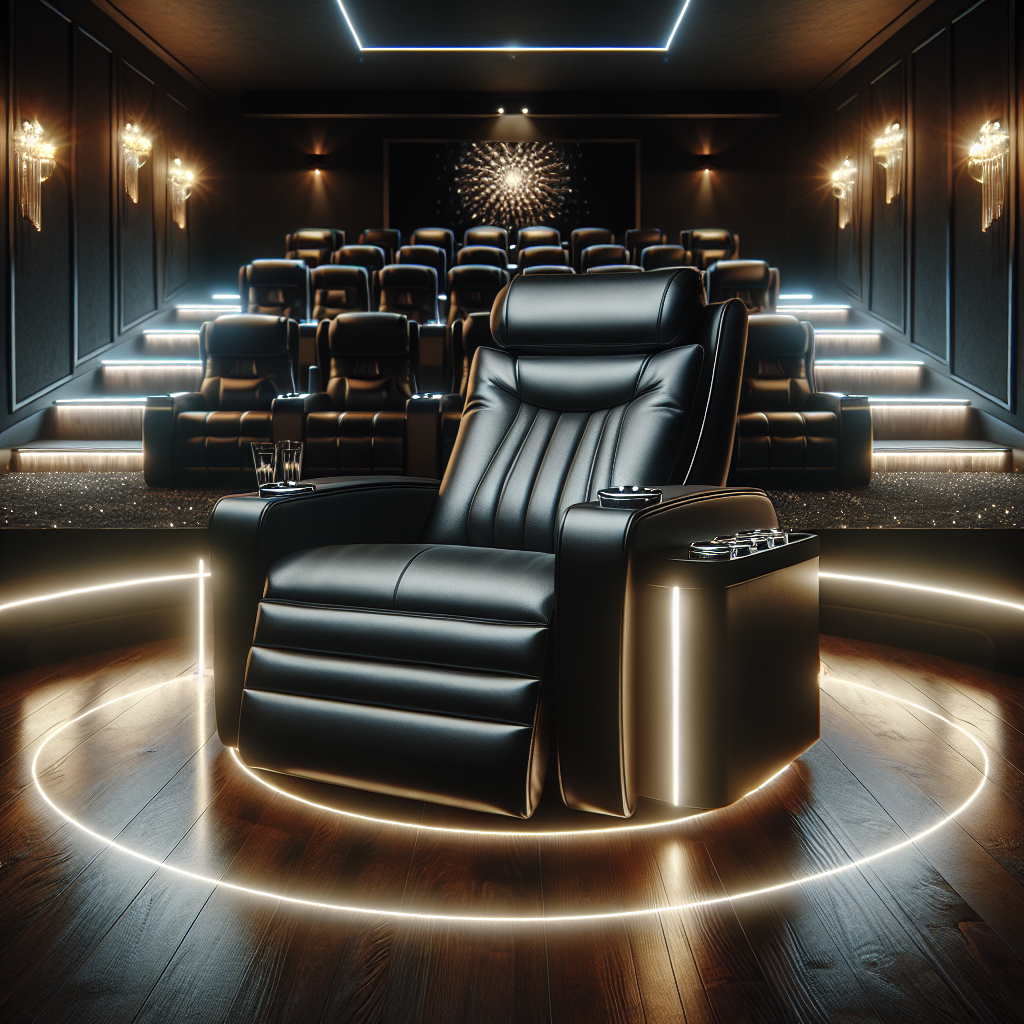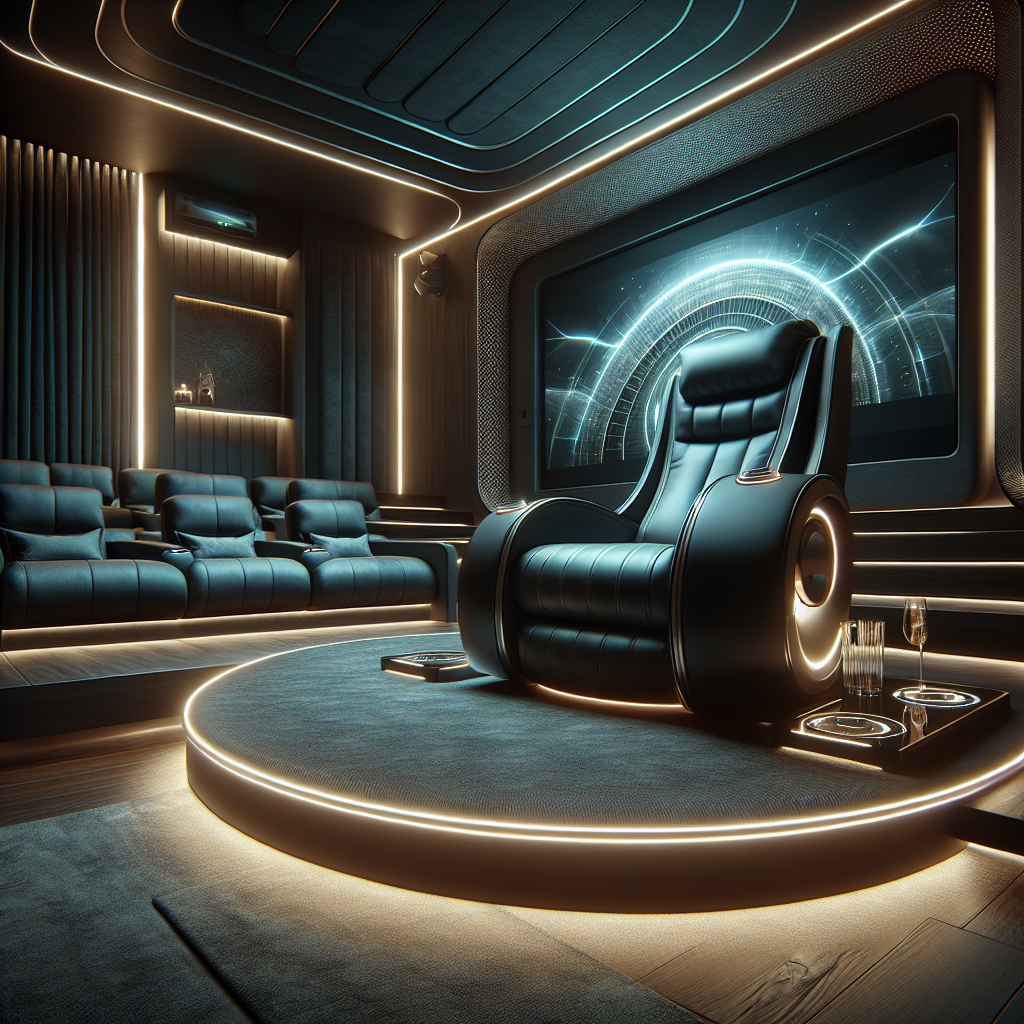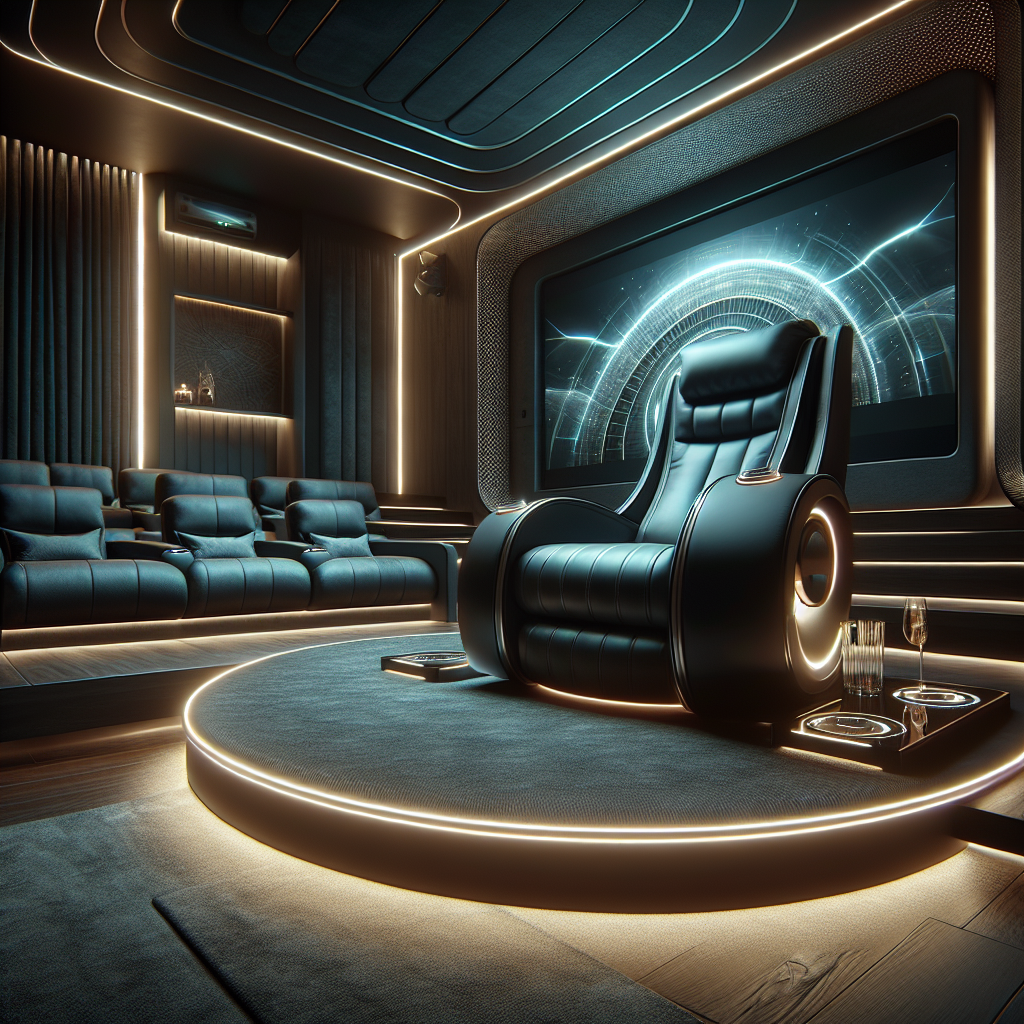Are you ready to bring the movie theater experience right into your own home? Look no further than designing the ultimate home theater room. With carefully chosen elements such as top-notch audio and video equipment, comfortable seating, and stylish decor, you can create a space that rivals any commercial cinema. Whether you’re eager to host thrilling movie nights with friends or simply want a cozy corner where you can unwind with your favorite films, this article will guide you through the essential steps to transform your living space into a cinematic retreat.
1. Room Selection
Choosing the right room
When designing your ultimate home theater room, the first step is to choose the right room in your house. Consider a room that is away from high-traffic areas to minimize interruptions and ensure a dedicated space for movie nights. Look for a room with minimal windows or the ability to cover them, as natural light can create glare on your screen and affect your viewing experience.
Considering room dimensions
The dimensions of the room play a crucial role in creating optimal sound and visual quality. Take into account the width, length, and height of the room when selecting the equipment and seating arrangement. A long room can benefit from a wide aspect ratio screen, while a square room may require additional planning for speaker placement.
Evaluating acoustic properties
One of the key aspects of a fantastic home theater experience is impeccable sound quality. When evaluating the room’s acoustic properties, consider factors like echo, reverberation, and ambient noise. Rooms with minimal hard surfaces, such as carpeted floors and upholstered walls, can help absorb sound and reduce unwanted echoes. It may be beneficial to consult with a professional to optimize the acoustics of your home theater room.
2. Layout and Seating
Optimal seating arrangement
The layout and seating arrangement in your home theater room significantly impact the viewing experience. Consider a layout where every seat provides a clear view of the screen and speakers. Arranging the seating in a curved or semi-circular fashion can enhance the immersive feeling of being in a cinema. Make sure to leave sufficient space between rows to allow for comfortable movement.
Incorporating tiers or platforms
For a true theater-like experience, incorporate tiers or platforms into your seating arrangement. By elevating the back row of seats higher than the front, everyone gets an unobstructed view of the screen. This tiered seating arrangement not only improves visibility but also adds a sense of grandeur to your home theater.
Determining viewing distance
To achieve optimal viewing experience, consider the viewing distance from the screen. As a general rule, the distance between the screen and the front row of seats should be approximately one and a half times the screen’s diagonal measurement. This distance ensures that viewers can comfortably take in the entire screen without straining their eyes.

3. Audio System
Choosing the right speakers
Selecting the right speakers is essential for delivering immersive and high-quality sound. Consider investing in a surround sound system, which typically includes front speakers, surround speakers, and a center speaker. Look for speakers that are compatible with your audio setup and have good frequency response and power handling capabilities.
Positioning the speakers
Proper placement of your speakers is crucial for achieving an enveloping sound experience. Position the front speakers on either side of the screen at ear level to create a realistic audio stage. Surround speakers should be mounted or placed slightly behind and above the listening area for optimal sound distribution. The center speaker, responsible for dialogue, should be positioned directly below or above the screen for clear and intelligible sound.
Incorporating a subwoofer
A subwoofer adds depth and impact to the low-frequency sounds, enhancing the overall audio experience. When positioning the subwoofer, consider placing it at the front of the room or in a corner for maximum bass response. Experiment with different placements to find the optimal position for your specific room dimensions and speaker setup.
4. Video Display
Choosing the right screen
Selecting the right screen is key to achieving stunning visuals in your home theater room. Consider factors like screen size, material, and aspect ratio. Opt for a high-quality projection screen or a large flat-screen TV, depending on your preferences and budget. Ensure the screen material has high gain and good color representation for a vivid and engaging picture.
Determining the ideal screen size
The ideal screen size depends on the viewing distance and the dimensions of your room. Consider the rule of thumb: the diagonal screen size should be approximately one-third the distance between the screen and the nearest seating row. This ensures that viewers can comfortably see all the details without having to strain their eyes or move their heads excessively.
Considering projector vs. TV
When deciding between a projector and a TV, consider your budget, room size, and personal preferences. Projectors offer a larger screen experience, making them ideal for larger rooms or those seeking a more cinematic feel. TVs, on the other hand, provide excellent picture quality in smaller rooms or for those who prefer a more compact setup. Consider the pros and cons of each option and choose what best suits your needs.

5. Lighting
Implementing ambient lighting
Proper lighting sets the mood and enhances the overall viewing experience in your home theater room. Implement ambient lighting by installing dimmable ceiling lights, wall sconces, or recessed lighting. This allows you to control the level of brightness and create a cozy and inviting atmosphere.
Installing dimmable lights
Dimmable lights provide flexibility in adjusting the lighting levels according to your preferences. Install dimmer switches for the main ambient lights and experiment with different settings to find the perfect balance between visibility and creating a theater-like ambiance. Dimming the lights also reduces glare on the screen, ensuring an uninterrupted viewing experience.
Using LED strips for accent lighting
LED strips are a popular choice for adding a touch of elegance and visual appeal to your home theater room. Install LED light strips along the baseboards or behind furniture for a subtle accent lighting effect. LED strips are available in various colors, allowing you to customize the lighting to match your desired ambiance.
6. Acoustic Treatments
Installing sound panels
To achieve optimal sound quality, consider installing sound panels on the walls and ceiling of your home theater room. Sound panels help absorb sound reflections and reduce echoes, resulting in a more immersive audio experience. Place the panels strategically around the room, focusing on areas with hard surfaces to improve sound dispersion and clarity.
Using bass traps
Bass traps are specifically designed to control low-frequency sound reflections in your home theater room. Install bass traps in corners or the juncture between walls and ceilings to absorb excessive bass energy. This helps in achieving a balanced and refined sound, enhancing the overall audio quality and reducing bass resonance issues.
Consideration for soundproofing
Creating a soundproof environment ensures that external noise does not disturb your movie-watching experience. Install soundproof materials on the walls and ceiling, such as mass-loaded vinyl or specialized soundproof drywall. Sealing gaps and cracks around doors and windows also helps in reducing sound leakage. By soundproofing your home theater room, you can enjoy movies and music without any unwanted distractions.
7. Controller and Automation
Choosing the right A/V receiver
An A/V receiver acts as the central hub for your home theater system, connecting all your audio and video components. When choosing an A/V receiver, consider factors like power output, compatibility with your speakers, and connectivity options. Look for receivers that support the latest audio formats to ensure an immersive and high-fidelity sound experience.
Implementing a universal remote control
Simplify your home theater experience by using a universal remote control. A universal remote allows you to control multiple devices with a single device, eliminating the need for multiple remotes. Choose a remote control that is user-friendly and programmable so that you can easily customize the controls according to your needs.
Integrating smart home automation
Take your home theater to the next level by integrating smart home automation. With a smart home system, you can control the lights, sound system, screen, and other devices using voice commands or a smartphone app. This adds convenience and enhances the overall user experience in your home theater.
8. Furniture and Decor
Selecting comfortable seating
Comfortable seating is essential for enjoying long movie marathons in your home theater room. Choose comfortable recliners or theater-style seats with plush cushions and armrests. Consider investing in seating with built-in cup holders and storage compartments for added convenience.
Incorporating themed decor
Create a personalized and immersive experience in your home theater room by incorporating themed decor. Choose a theme that reflects your interests, be it a classic cinema-inspired design or a futuristic spaceship atmosphere. Add movie posters, framed memorabilia, and themed wall art to create a visually appealing and engaging space.
Choosing appropriate storage solutions
Proper storage solutions help keep your home theater room organized and clutter-free. Install shelves or cabinets to store your movie collection, gaming consoles, and other accessories. Consider dedicated storage for remote controls and cables to ensure everything is easily accessible and neatly organized.
9. Soundproofing
Installing soundproof curtains
Soundproof curtains not only enhance the visual aesthetics of your home theater but also help in reducing sound transmission through windows. Install thick, heavy curtains that are specifically designed to block noise. These curtains can significantly improve sound insulation and create a more immersive and private environment.
Sealing gaps and cracks
Sound leakage through gaps and cracks can disrupt the audio experience in your home theater. Seal any gaps or cracks in the walls, ceiling, or floor to prevent sound from entering or escaping the room. Use weatherstripping or silicone sealant to seal gaps around doors and windows. This simple step can make a noticeable difference in the sound quality of your home theater.
Using mass-loaded vinyl for walls and ceiling
For an additional layer of soundproofing, consider using mass-loaded vinyl on the walls and ceiling of your home theater room. Mass-loaded vinyl is a dense, flexible material that effectively blocks sound transmission. Install it behind drywall or directly onto existing surfaces to reduce sound vibrations and improve acoustic insulation.
10. Atmosphere and Ambiance
Creating a cozy atmosphere
To create a cozy and inviting atmosphere, add plush rugs, comfortable blankets, and throw pillows to your home theater. Choose warm colors for the walls and decor to create a welcoming and comfortable space. Enhance the ambiance with scented candles or aromatherapy diffusers to further elevate the experience.
Incorporating acoustic art panels
Acoustic art panels serve a dual purpose of enhancing the acoustics and adding visual interest to your home theater room. Choose artistic panels that are specifically designed for sound absorption and place them strategically on the walls. These panels not only improve the sound quality but also act as decorative elements, transforming your home theater into a visually appealing space.
Using drapes or curtains for a theater feel
To complete the theater-like feel in your home theater room, use heavy drapes or curtains to cover the walls and windows. This not only adds an elegant touch but also helps in sound absorption. Opt for rich, dark-colored curtains to enhance the cinematic experience and reduce any glare from external lighting.
Designing the ultimate home theater room requires careful consideration of various factors, from room selection to soundproofing and ambiance. By following these guidelines and personalizing your space according to your preferences, you can create a home theater that offers an immersive and unforgettable entertainment experience for you and your loved ones.

